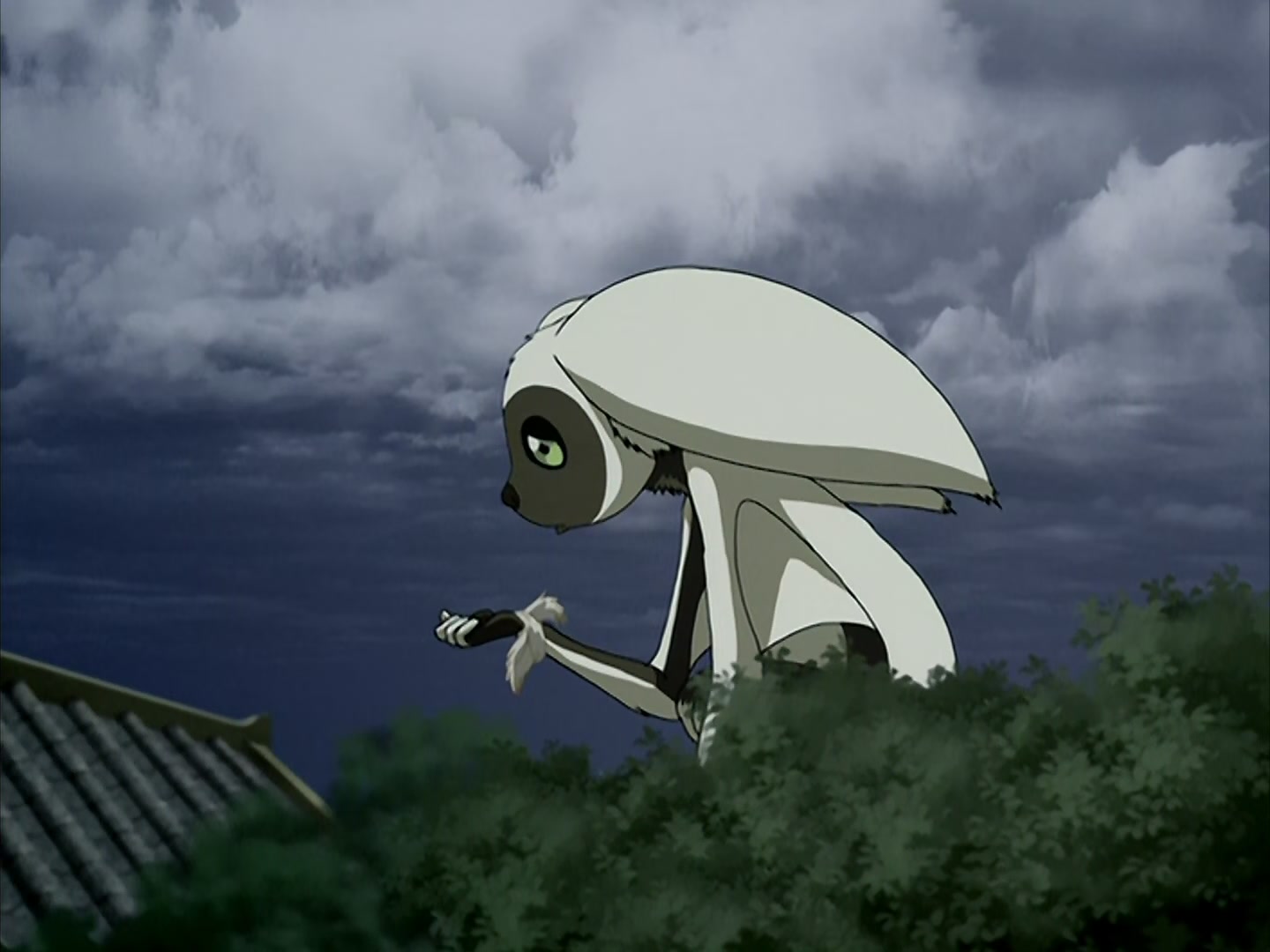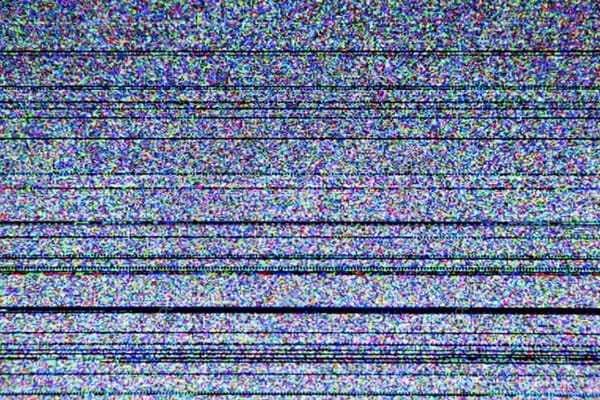Avatar: The Last Airbender: "Chapter Fourteen: City of Walls and Secrets" and "Chapter Fifteen: The Tales of Ba Sing Se"
In which Aang thwarts authoritarianism by buying a zoo

(This is the fourteenth installment of my weekly recaps of Avatar: The Last Airbender, the Nickelodeon animated series that ran from 2005 to 2008 to much critical acclaim. I’ve never seen it! These recaps are only available to paid subscribers.)
“Chapter Fourteen: City of Walls and Secrets” (originally aired September 22, 2006)
“Chapter Fifteen: The Tales of Ba Sing Se” (originally aired September 29, 2006)

If you know absolutely anything about me or my taste, then you knew I was going to be an easy mark for "The Tales of Ba Sing Se." A series of disconnected vignettes that serve as palate cleansers after a number of very heavy episodes? And one of them is about how an old man is very sad? C'mon! That's Emily VanDerWerff catnip. Indeed, when Cassie was trying to get me to watch this show, she started her sell with "The Tales of Ba Sing Se" and especially Iroh's story in it.
What can I say? My taste is pretty obvious.
What I wasn't expecting was how much I would like "City of Walls and Secrets," an episode about the characters getting to the mysterious city they've been heading to all along, only to realize it's a corrupt cesspool. This episode earned the show an Emmy nomination, and it's easy to see why. It's a compelling paranoid thriller about a bunch of kids who get in way over their heads without quite realizing what's happening.
The story of Avatar has loose similarities to The Wizard of Oz (quick: if Aang is Dorothy, who are his three companions?), so it only makes sense that Ba Sing Se would have an Emerald City vibe. A stratified society designed to make everything seem glamorous and impressive? Yep. A seemingly impressive and all-powerful ruler who's really a puppet? You bet. A secretive program of brainwashing going on behind the scenes? What, you never saw that deleted scene with the Winkies trying to Clockwork Orange Scarecrow?
Fascinatingly, "City of Walls and Secrets" also seems to take place in a world defined by a vaguely 1980s idea about what authoritarian Communism looked like. Ba Sing Se and the Earth Kingdom more generally seem to be vaguely based on China, which may be influencing my read here, but the presentation of Ba Sing Se has a lot of resonance with fictional depictions of Communism throughout the latter half of the 20th century. In particular, Long Feng's reveal that the Dai Li exist in part to make sure nobody finds out about the ongoing war with the Fire Nation and the replacement of the original Joo Dee with another have the vaguely dystopian feel of, say, Orwell's 1984. Heck, Long Feng and the Dai Li are particularly interested in promoting a kind of cultural revolution.
This episode isn't offering sophisticated political commentary by any means, but one thing I'm struck by again and again in watching Avatar is how its political compass feels very firmly of its time. The 2000s saw so many American movies and TV shows try to tell stories about the good guys going up against some sort of pernicious evil, but they kept falling back on the tropes of '80s anti-Communist action movies, because the realities of global terrorism were much harder to boil into simple action movie plots with easily definable sides. (Also: Telling stories about terrorism in the 2000s ran the understandable risk of creating horribly racist tales that might spur anti-Islamic hostilities. It was a time when over-simplified action movies could just make everything worse!)

I am really not trying to say here that "City of Walls and Secrets" is a simple anti-Communist manifesto. For one thing, Ba Sing Se has had the serial numbers of its political identity shaved off, leaving a vaguely authoritarian monarchy, which is, of course, a thing that has existed at many points throughout human history. And for another, this show is way too smart than to turn this storyline into something so simplistic.
In fact, I would wager the political situation in the United States actually weighed a bit more heavily over this episode. In particular, the idea of a populace being anesthetized into never once thinking about a war going on outside its borders is pretty telling, considering that these episodes aired in 2006, when the U.S. government was frantically trying to downplay how poorly the war in Iraq, in particular, was going.
That "Walls and Secrets" can sustain these many readings is a sign of how good it is. But it is rooted in a distinct understanding of Communism as filtered through American pop culture. That understanding is largely watered-down versions of Orwell and Kafka, and it could be more properly understood as "a take on authoritarianism." But the episode's depiction of bureaucracy, in particular, vibes with that sort of storytelling.

That's why it's so important that the very next episode is "The Tales of Ba Sing Se"! After setting up the city as an oppressive authoritarian city-state, ruled by a cultural ministry that tries to keep the people in the dark, the show pivots to telling a series of smaller stories about the city as a place where people live and play and go on dates and visit zoos and get involved in extended riffs on 8 Mile involving haikus. "Walls and Secrets" sets up Ba Sing Se itself as a kind of final boss for the season; "Tales" reminds us that this is a city, and any city will have lots of different kinds of people in it.
Much of the writing about "Tales" focuses on how it involves the characters we already know. And it is a great episode for getting to know those characters a little better, Iroh and Zuko in particular. (Also, Momo's story is about how he almost gets eaten three separate times when searching for Appa, which is on brand for the little guy.) But notice how each of these stories takes us into a new corner of the city the characters find themselves in. Katara and Toph get mocked by some mean girls after a day at the spa. Sokka meets some poetry fans. Iroh helps a mugger learn to mug more effectively. Zuko goes on a date and checks out a cool fountain. Aang finds out what everybody does in their leisure time. Momo almost gets eaten.
Many people who write about "Tales" describe it (approvingly!) as a "filler episode," meaning that it's an episode you could remove from the show without affecting the main plot arc all that much. This idea is likely true. Really the only bit that really matters for future episodes is Momo finding Appa's footprint. (Then laying down in it! It's very sad!) You could probably continue the story without having seen Zuko's pretty okay first date or Katara and Toph's day at the spa.
But also, you couldn't. One thing shows with 8- or 10-episode seasons often struggle with is building a sense of place. Avatar is a travelogue show, which broadly means that its characters visit a new location every episode or so, learn about that location's secrets, then move on to the next one. Thus, the sense of place for each village is necessarily flimsy, because the larger story being told is about the world as a whole.
Ba Sing Se has to be different. We have to have a sense that it's a place worth going to, a place worth living in, and a place worth saving. But we also have to get a sense of just why it's not better prepared for the arrival of the Fire Nation, despite how last episode featured a giant drill that almost penetrated the outer wall. "The Drill," "City of Walls and Secrets," and "Tales" all show us three different views of the city, but I would argue "Tales" is the most vital of them in getting us on board with whatever is to come.
Ba Sing Se is only as useful to the show as it is meaningful to viewers, and while I liked the way "City of Walls and Secrets" suggested that Aang might have to make a deal with an authoritarian city-state just because it wasn't as bad as the other authoritarian state, that dilemma is limited in terms of its moral complexity. When you know that the leaders of Ba Sing Se have bamboozled the populace, the stakes are mostly theoretical. When you know that this city is full of people whose lives are in danger, many of whom seem pretty chill, those stakes have far more urgency.
It's notable that the tale of this episode is "Tales of Ba Sing Se" and not, say, "Tales of the Avatar." We get the tales of the Avatar in every episode of this show. "Tales of Ba Sing Se" is a chance to step outside of that perspective and even step outside the perspective of the show as it usually exists to remind us that for all the grand conflict on this show, people are still living their lives in its shadow.
If Ba Sing Se falls, it will put Aang and his friends at a distinct strategic disadvantage. But also, lots of the citizens of the city will die or have their livelihoods ruined. That fact matters. Many TV shows would ignore those nameless throngs. Avatar, in its way, does not. More TV shows should be like it.

Other thoughts I thought:
- I gotta say that I've been feeling a bit burnt out on this show the last few weeks, not because it was bad (it was excellent!) but because I was struggling to think of things to say about it. Fortunately for all of us, these two episodes turned that right around. They're fantastic!
- Okay, yeah, I cried when Iroh sang "Leaves from the Vine" and mourned his dead son and then the show paid tribute to Mako (who died shortly after completing his recording for this episode). A really lovely moment that wouldn't exist in a 10-episode season!
- I have to say that this season is going out of its way to give us a whole bunch of Katara looks, and I'm all for it. Her whole "sneaking into the Earth King's soiree" deal is the kind of thing I'd cosplay if I did that sort of thing (and I don't). (Also it would be vaguely culturally appropriative?) (I just thought the outfit was cute.) (Is what I'm trying to say.)
- The king's bear: A+++ character. More of him, please.
- I think I say this every week, but I'm so impressed with just how long the show leaves Appa's fate in doubt. If you were watching this show in 2006, it would have been months since Appa disappeared at this point. That's a gutsy choice for a show aimed at kids!
- The Katara/Toph segment in "Tales" was kind of the worst. It was fun to see them bonding, but Katara all but dragging the obviously trans masculine Toph to the spa and then Toph explaining that one thing about being blind is that she doesn't have to care how she looks(???) was all a bit bizarre.
- "Tales" ranked: Iroh > Momo > Zuko > Sokka > Aang > Katara/Toph
- That said, I would go to Aang's zoo.
- Also, I'm not trying to brag, but I absolutely noticed when Sokka accidentally had a line with six syllables, and I made note of an easy fix he could have made to get that line back to five syllables. Sokka! Call me! I consult!
Next week: "Lake Laogai" and "The Earth King" seem fun, but what's this first episode I'll be covering? "Appa's Lost Days"???????? That sounds SAD. But also: APPA. See you then!




